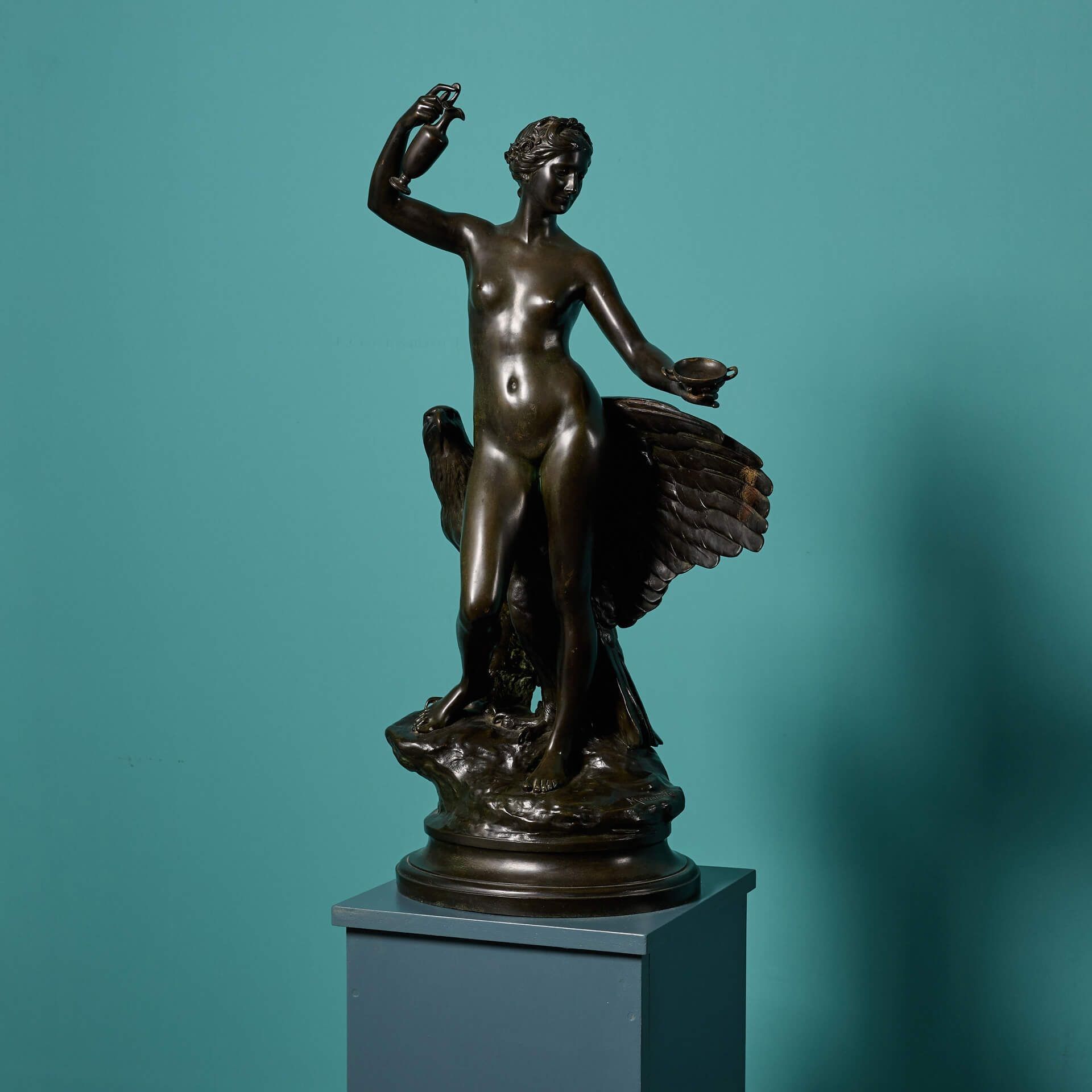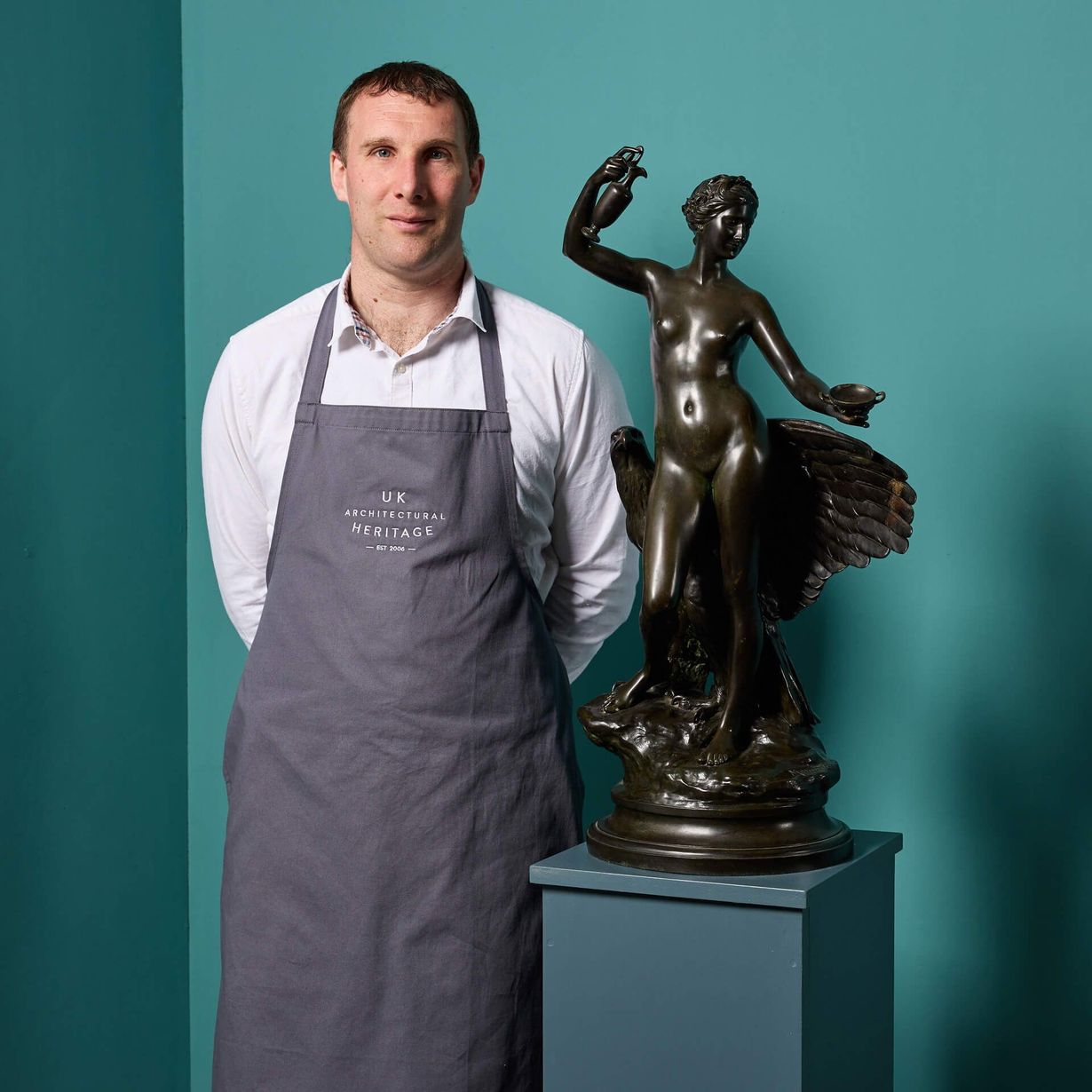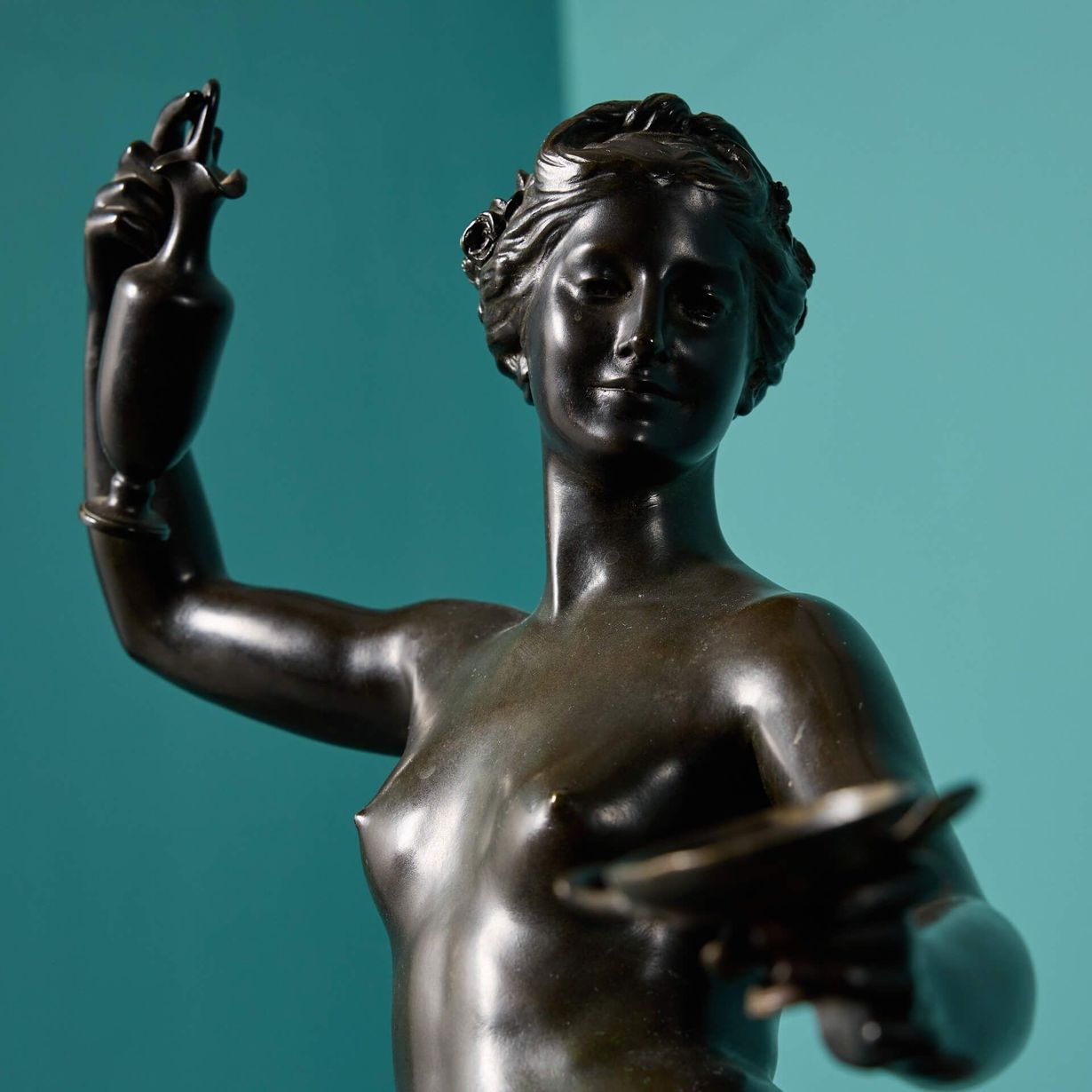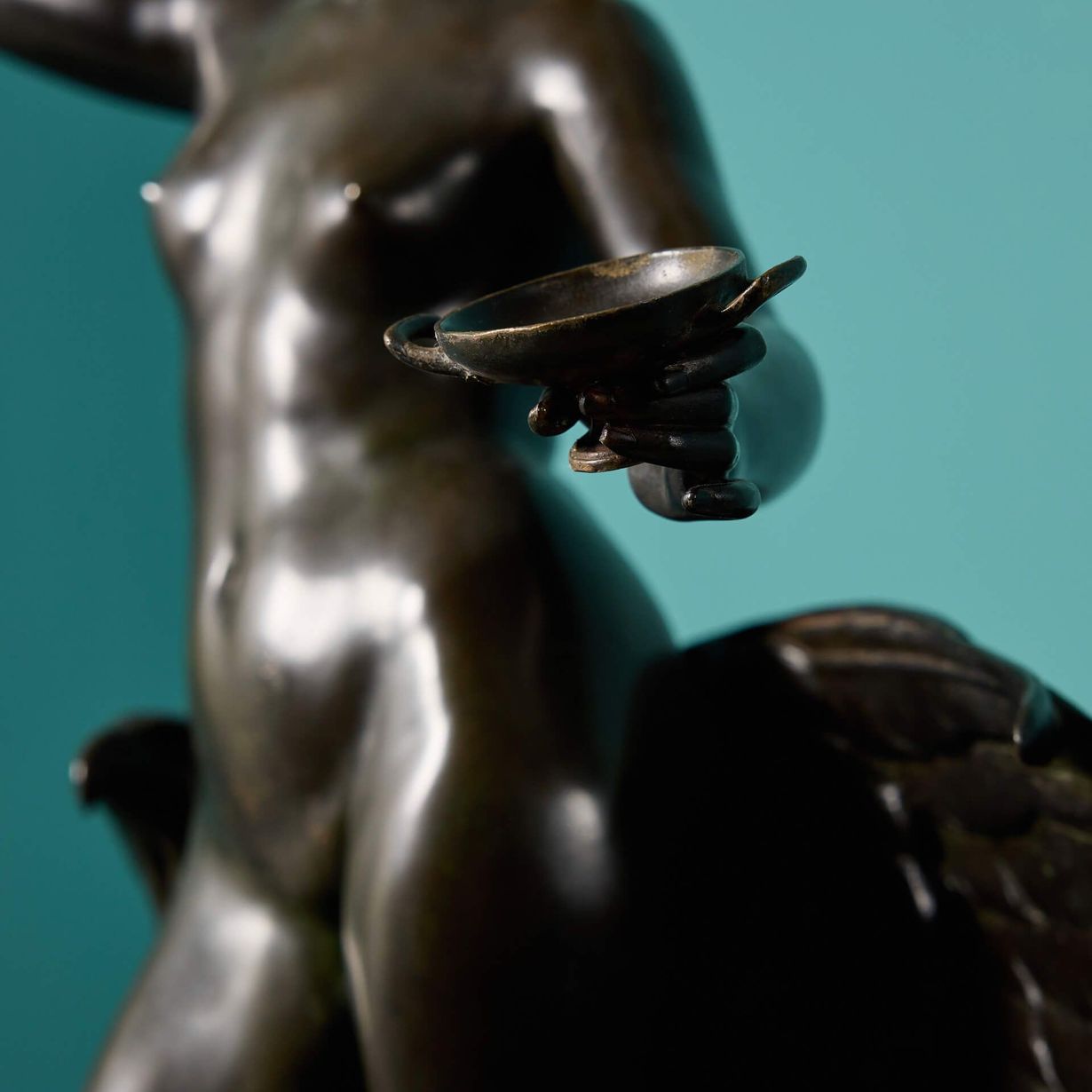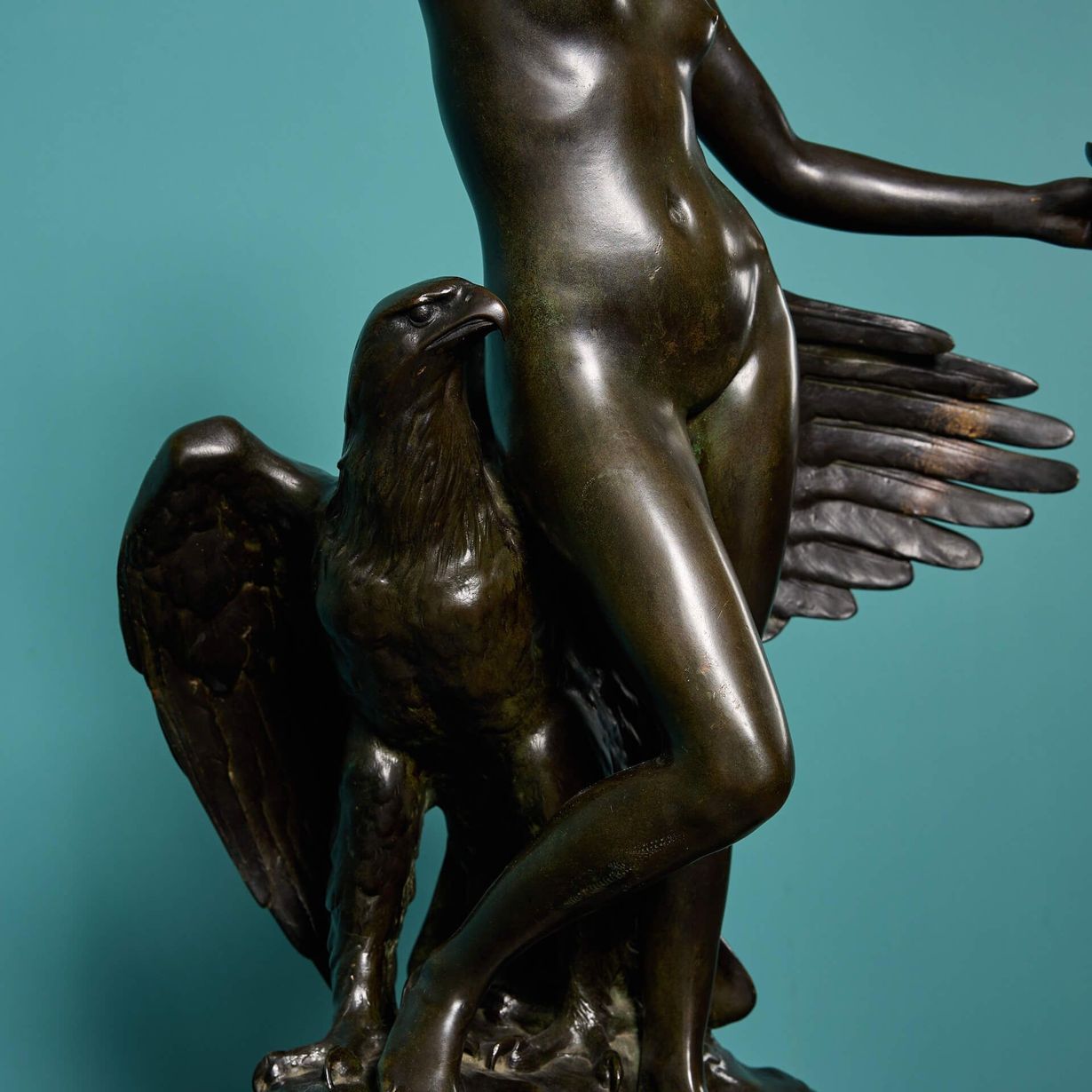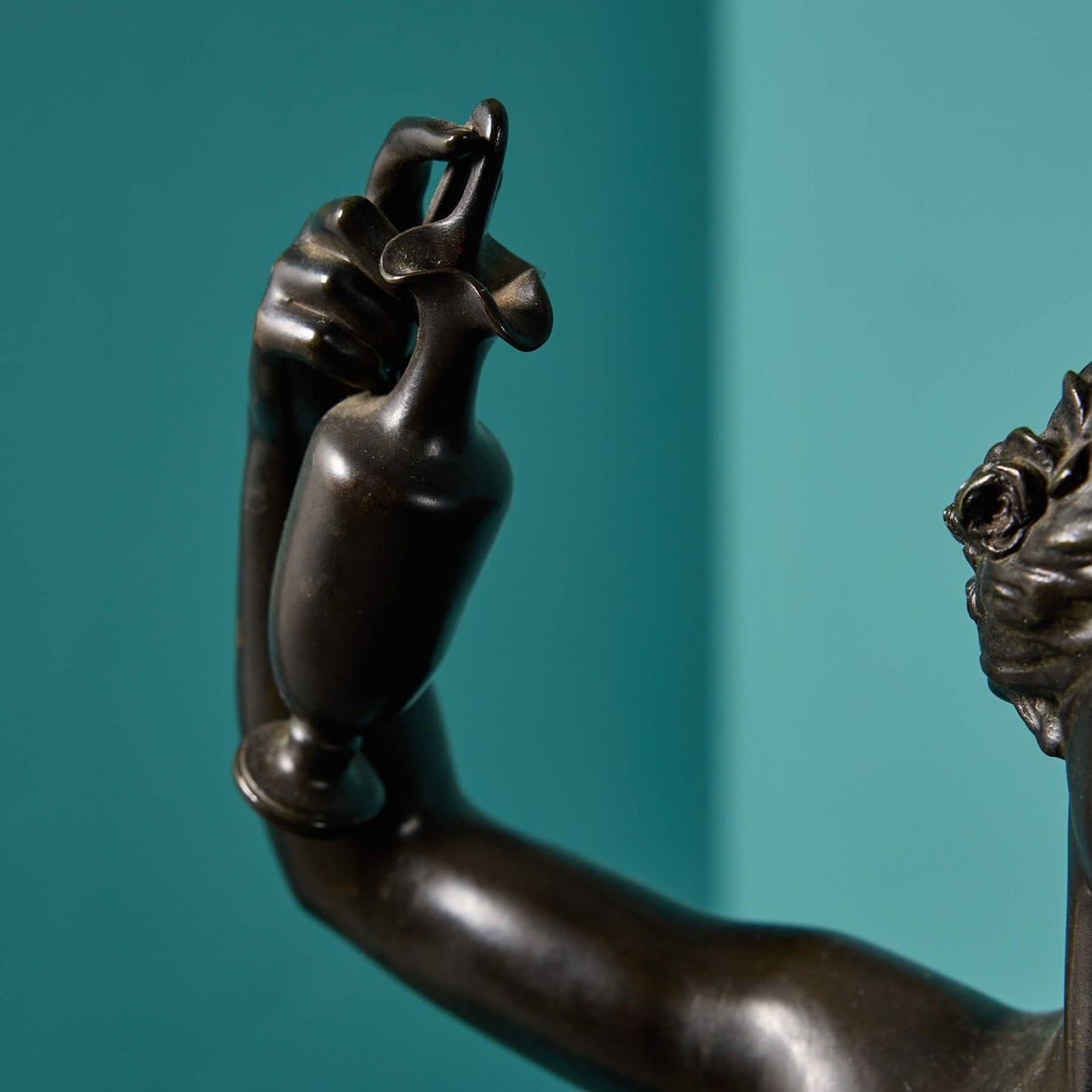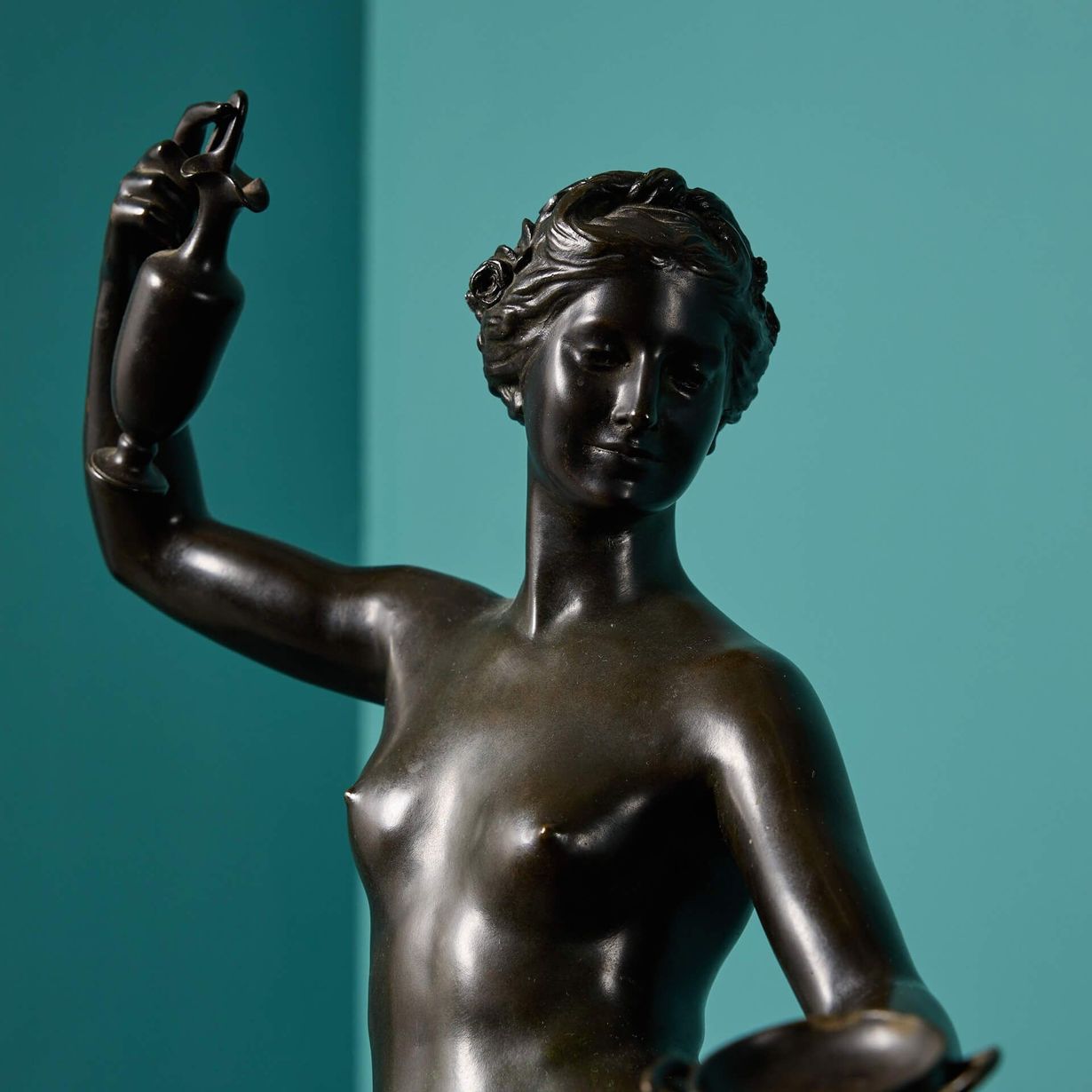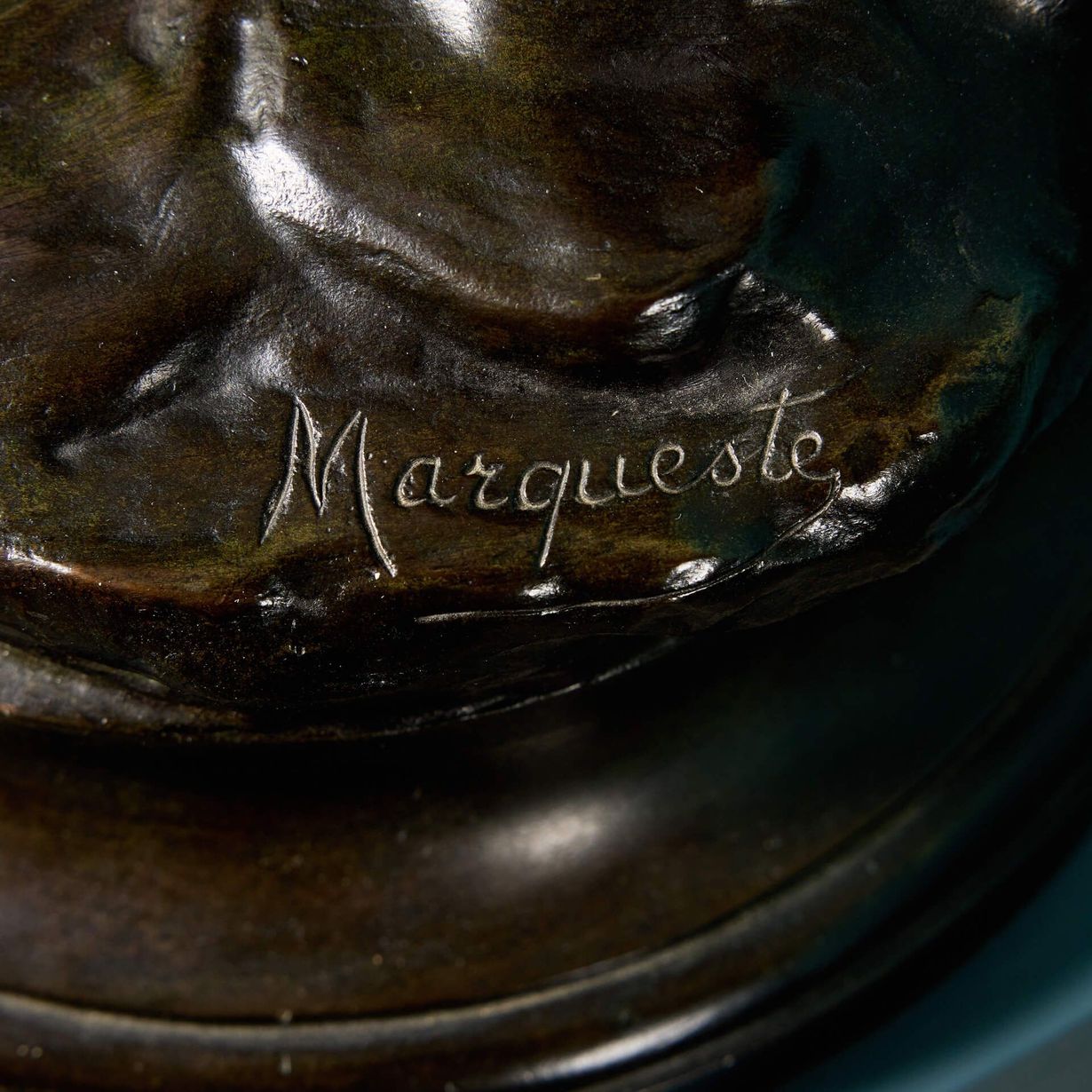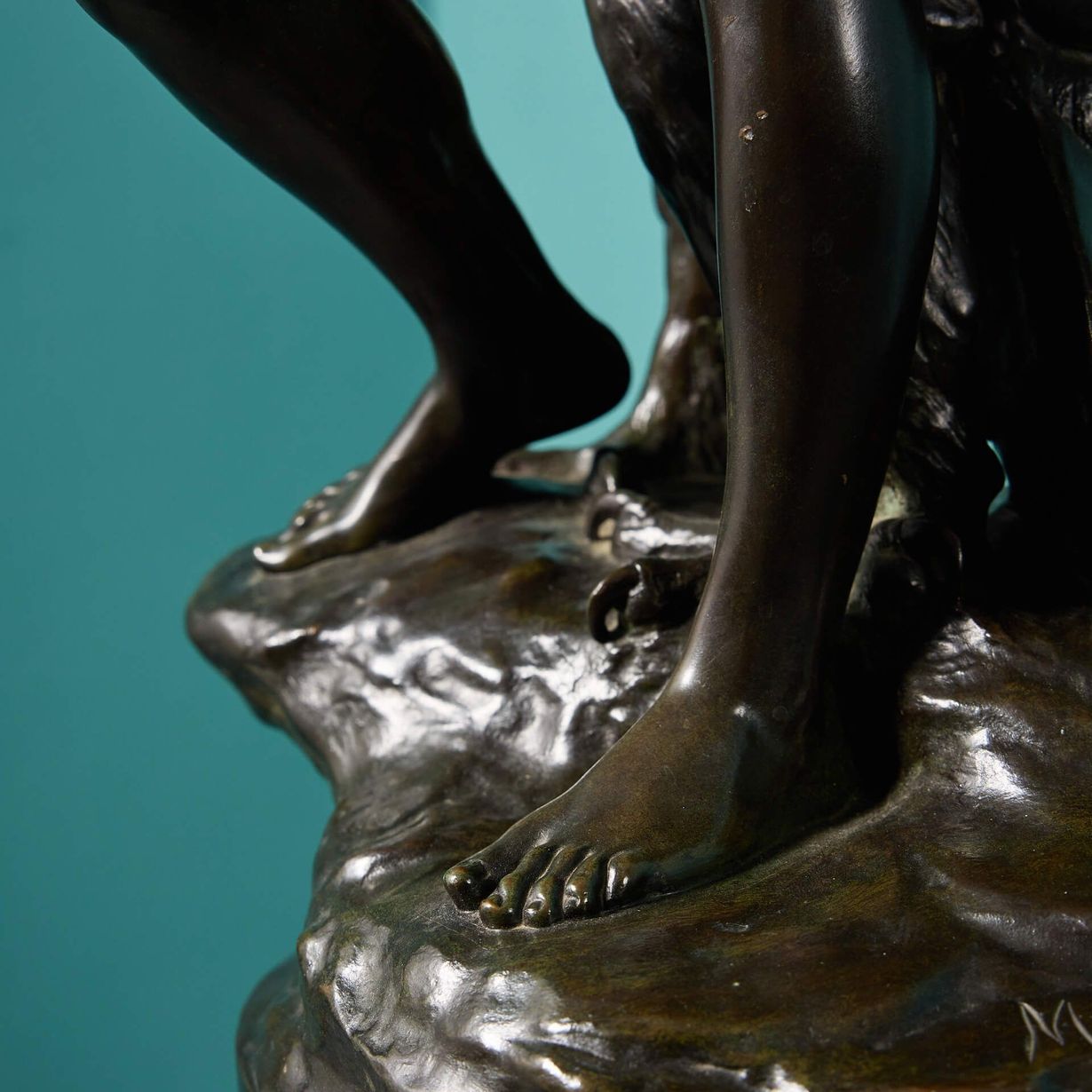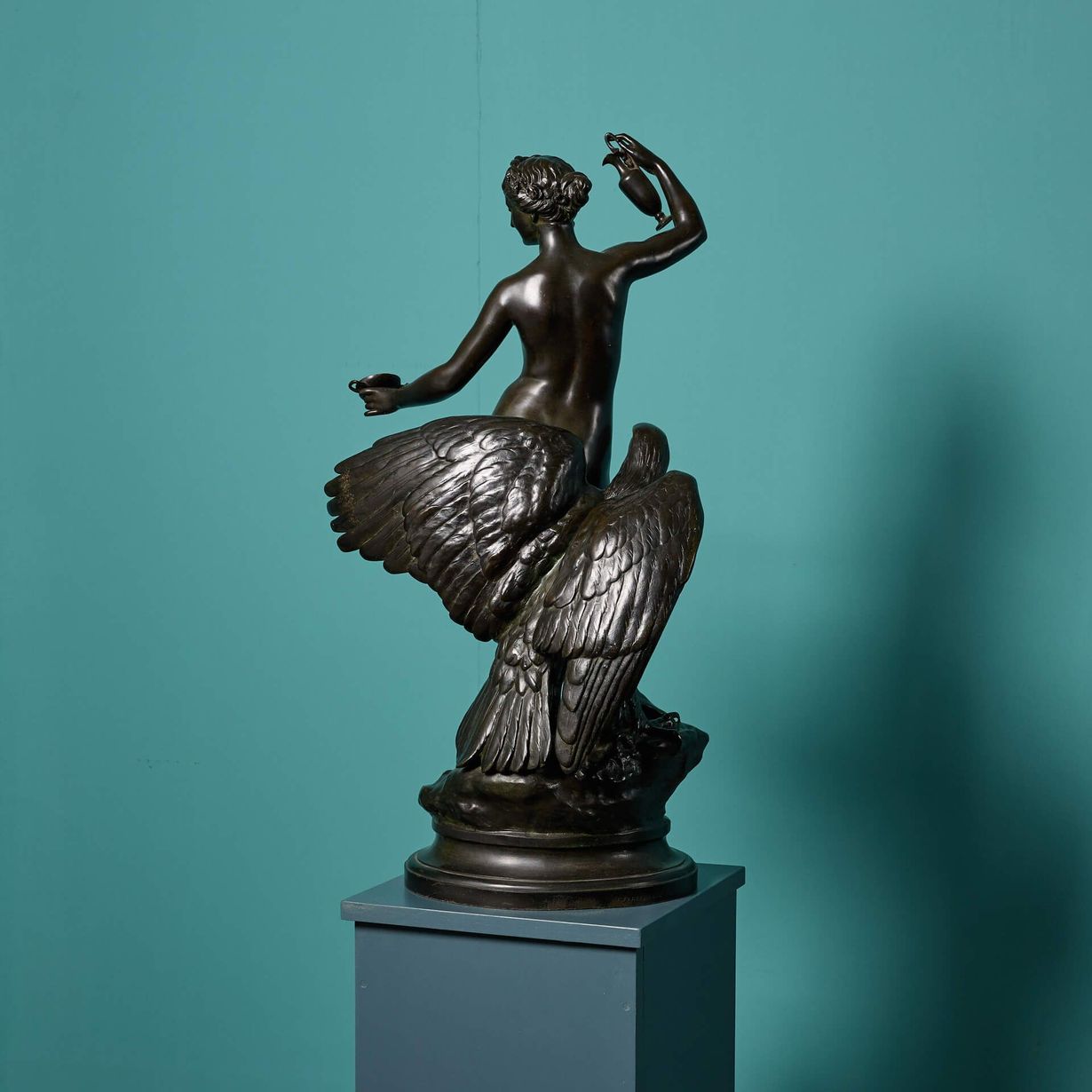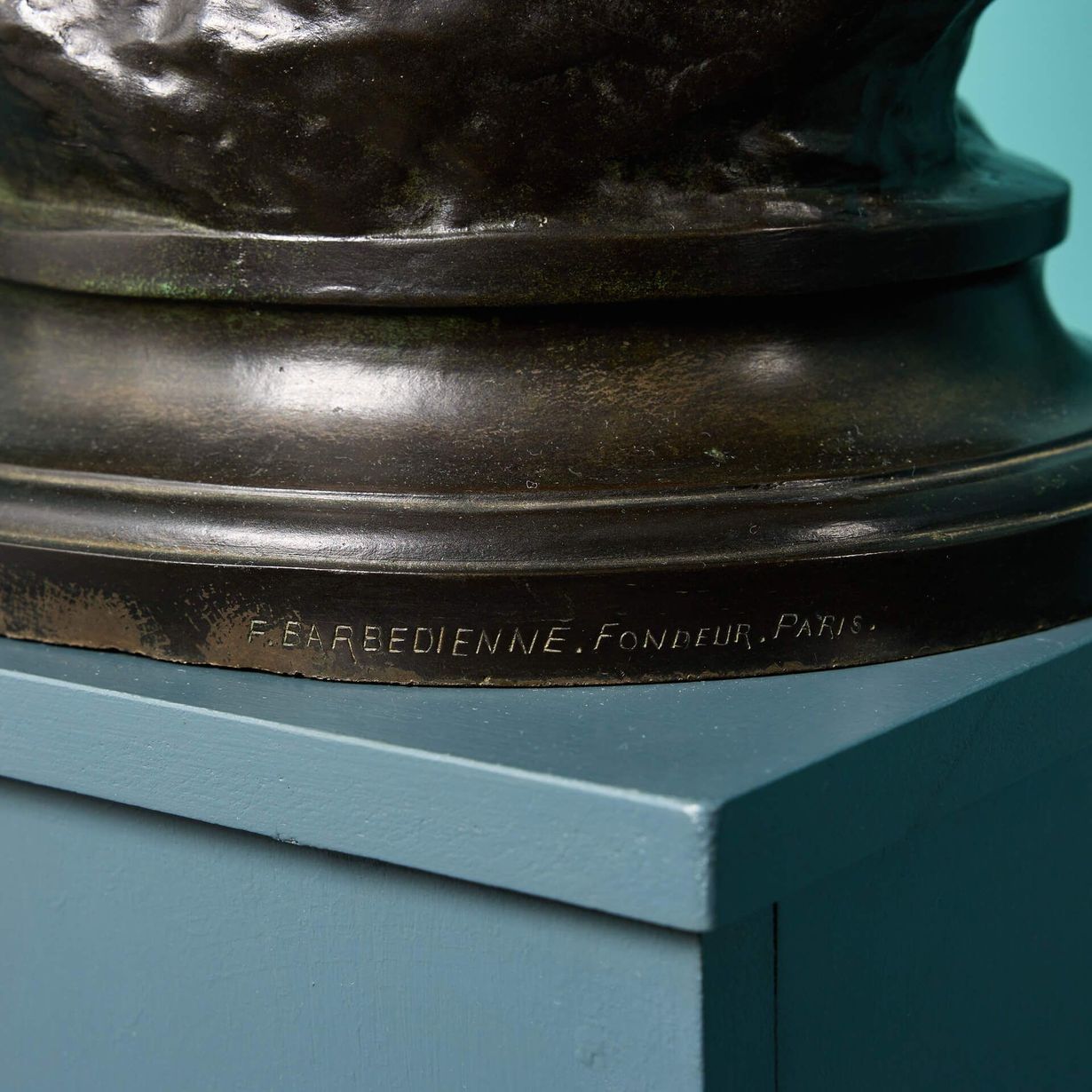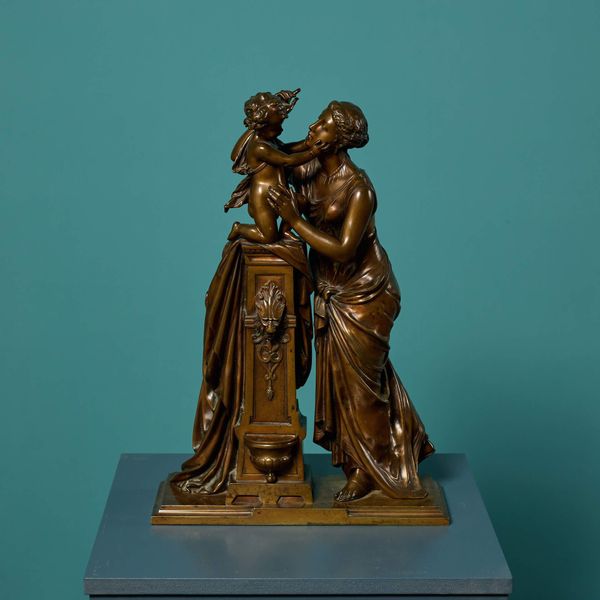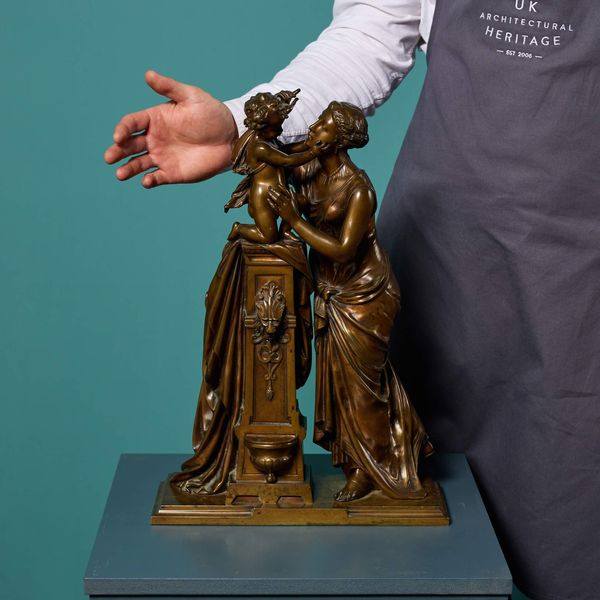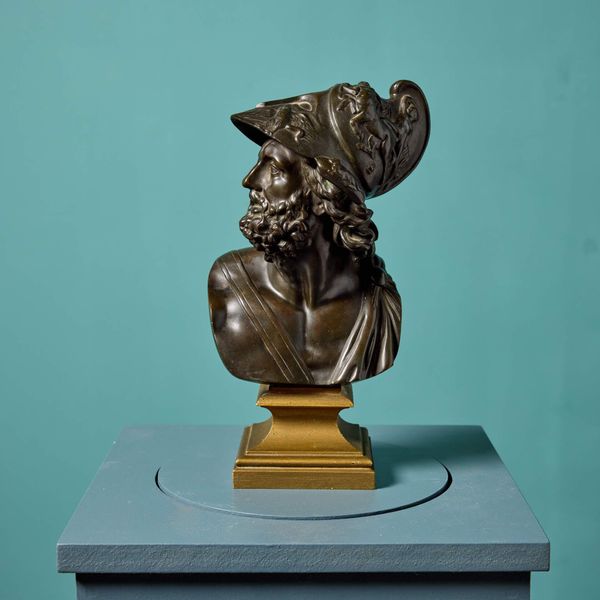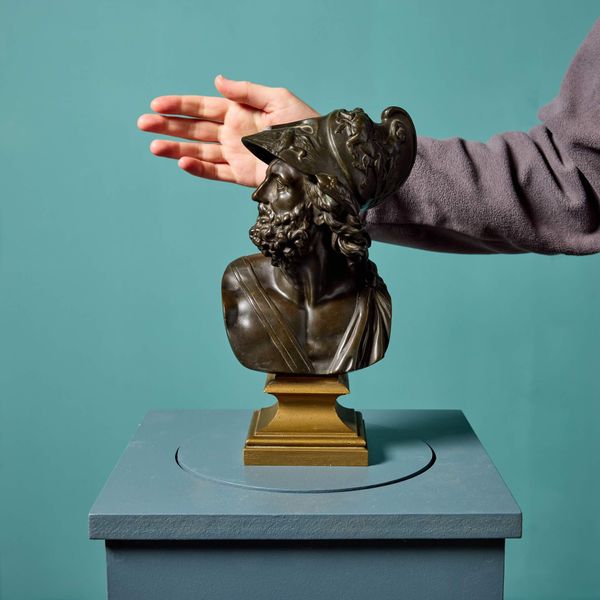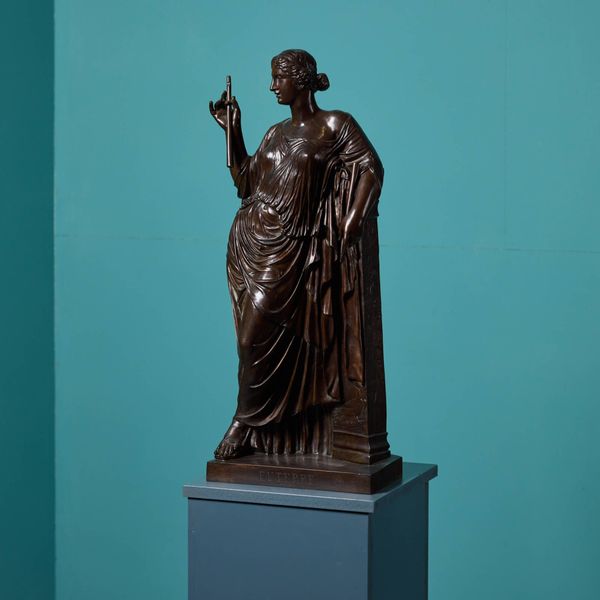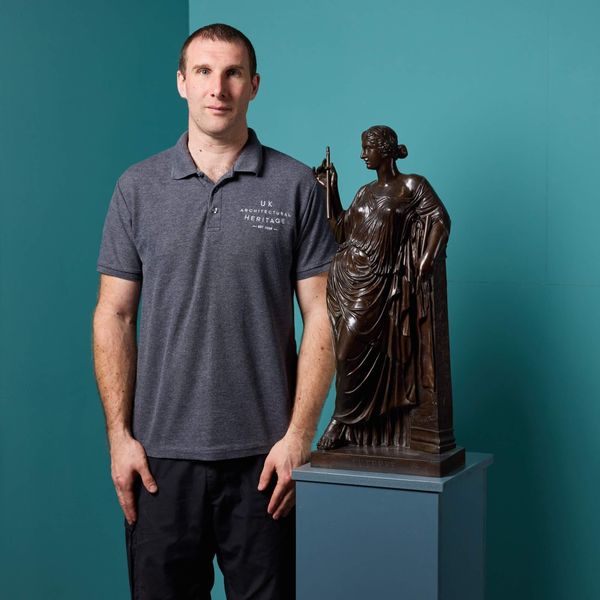About this piece
back to topAn antique bronze sculpture depicting Hebe and Jupiter’s eagle, after Laurent-Honore Marqueste.
Dating to circa 1890, the statue depicts a female figure standing nude on a rocky outcrop holding a pitcher and cup of ambrosia with the eagle behind her.
She stands on a circular naturalistically-cast base with cast signature ‘Marqueste’ and inscribed ‘F. BARBEDIENNE. FONDEUR. PARIS’.
In Neoclassical style, this French sculpture is of a large scale in a desirable bronze patina, showcasing the life like character of its subject.
Signed ‘Marqueste’ to the socle.
Hebe
In classical mythology, Hebe, meaning ‘youth’ or ‘bloom of youth’, is also cupbearer to the gods. She is the daughter of Juno and Jupiter, who is depicted as an eagle.
Sculptures of Hebe inspired sonnets and poems celebrating its beauty and grace.
Here she is depicted stood between Jupiter’s wings holding the oinochoe (wine pitcher) in one arm while with her free hand she gracefully offers him the divine nectar.
Ferdinand Barbedienne (1810-1892)
Ferdinand Barbedienne was an accomplished French bronze founder of the 19th century. In 1839, he partnered with Parisian engineer Achille Collas (1795-1859) who had invented a way to reproduce sculpture on a reduced scale in a process he titled ‘reduction mechanique’. Together, Barbedienne and Collas produced reduced scale versions of various famous statues and sculptures.
Laurent-Honoré Marqueste (1848-1920)
Marqueste was a French sculptor who produced works in various shapes and sizes constructed in marble, bronze, plaster and terracotta, for both public and private commissions.
He studied under the other great nineteenth century sculptor Jean-Alexander-Joseph Falguière (1831-1900).
Falguière was widely considered to be one of the fundamental figures in the growth of realism in nineteenth century French sculpture.
Marqueste was awarded several accolade over the years and made his debut in 1874 at the Salon, which originated in the late 17th century when Louis XIV sponsored an exhibit of the works of the members of the Académie Royale de Peinture et de Sculpture, and in the Salon d’Apollon of the Louvre Palace, Paris.
His smaller scale works included classical and mythological subjects, and female nudes, such as this depiction. These sculptures were known to have been exhibited at the Salon to widespread acclaim.
Additional dimensions
Base width 29cm (11.42in) x depth 26cm (10.24in)
